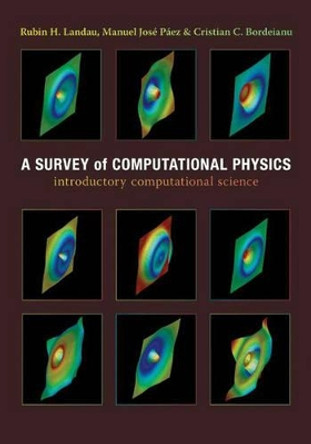Description
This book fills an important niche for the undergraduate by providing a well-organized, well-written introduction to a subject usually addressed in books for graduate students. Its problem-based approach to programming in Maple and Java, using common physics problems in a multitude of areas such as mechanisms, electromagnetism, and relativity, is very effective method of instruction. -- Gregory Moses, University of Wisconsin-Madison This easy-to-follow book is novel in being a hands-on workbook rather than a standard textbook. Importantly, it integrates scientific examples with a discussion of programming techniques and algorithm design. By having the student read it while sitting down at the computer, it offers immediate feedback. It is also unusual in using and comparing two very different approaches, Maple and Java. -- Jan Tobochnik, Kalamazoo College, coauthor of "An Introduction to Computer Simulation Methods" and Editor of the "American Journal of Physics"
About the Author
Rubin H. Landau is Distinguished Professor of Physics and Director of the Computational Physics Program at Oregon State University. He is the lead author of "Computational Physics: Problem Solving with Computers; A Scientist's and Engineer's Guide to Workstations and Supercomputers;" and "Quantum Mechanics II: A Second Course in Quantum Theory."
Reviews
One of Choice's Outstanding Academic Titles for 2005 "Essential... Rubin Landau offers a practical introduction to the world of scientific computing or numerical analysis. He introduces not only the concepts of numerical analysis, but also more importantly the tools that can be used to perform scientific computing... The presentation is particularly useful because real-life examples with real code and results are included."--Choice "Not only is [this book] an invaluable learning text and an essential reference for students of mathematics, engineering, physics, and other sciences, but it is also a consummate model for future textbooks in computational science and engineering courses."--Mathematical Reviews "The contents can be taught in lab-based courses at the undergraduate level. Much of the material covered is usually addressed in separate books. Therefore, the book is also suitable for independent study by graduate students and professional who wish to learn one or more of the languages in a comprehensive way with the emphasis kept on problem-solving."--Frits Agterberg, Computers and Geosciences "The colloquial and tutorial approach might help alleviate the many practical problems associated with incorporating computational applications into a more traditional lecture environment. The text provides many concrete and programming examples in action and illustrates how much you can accomplish with a few well-chosen tools... [S]tudents impressed with the text's workbook style and reference book quality will add it to their bookshelves and return to it often."--Michael Jay Schillaci, IEEE Computing in Science and Engineering
Awards
Short-listed for Choice Magazine Outstanding Reference/Academic Book Award 2005.
Book Information
ISBN 9780691121833
Author Rubin Landau
Format Hardback
Page Count 512
Imprint Princeton University Press
Publisher Princeton University Press
Weight(grams) 1049g








